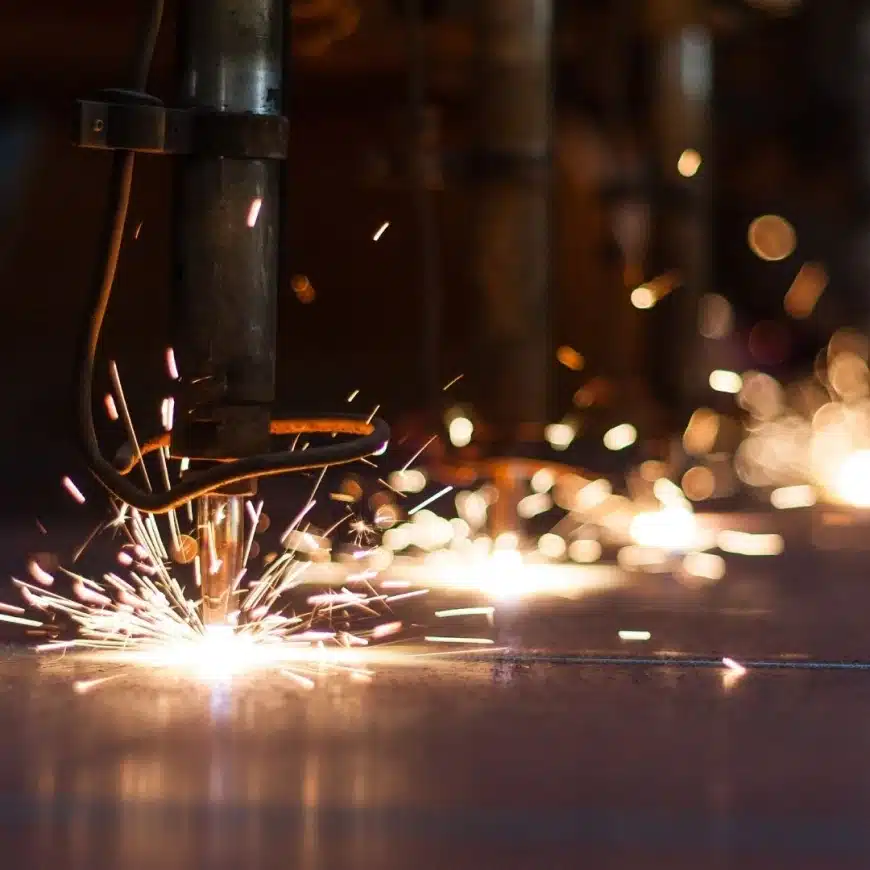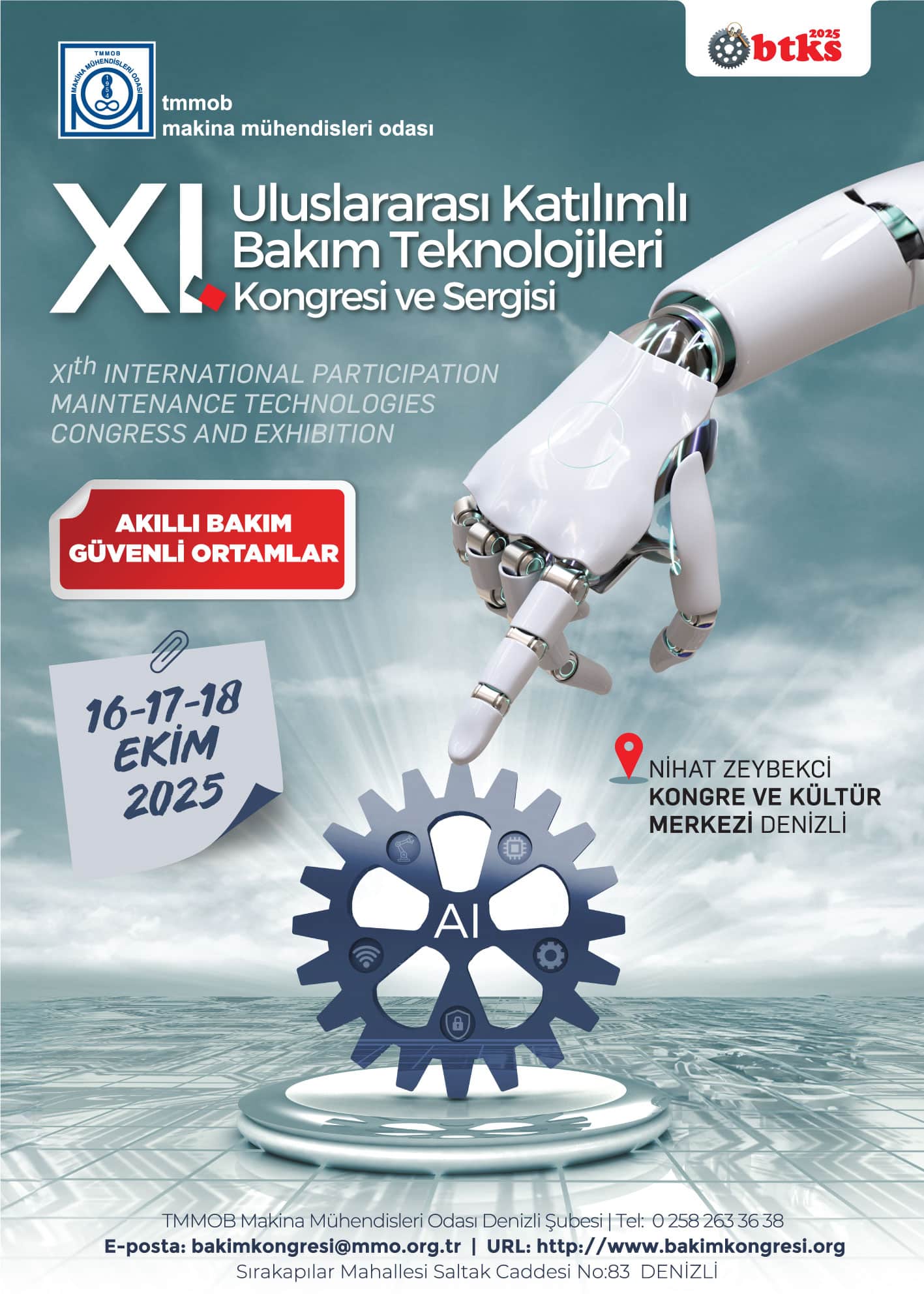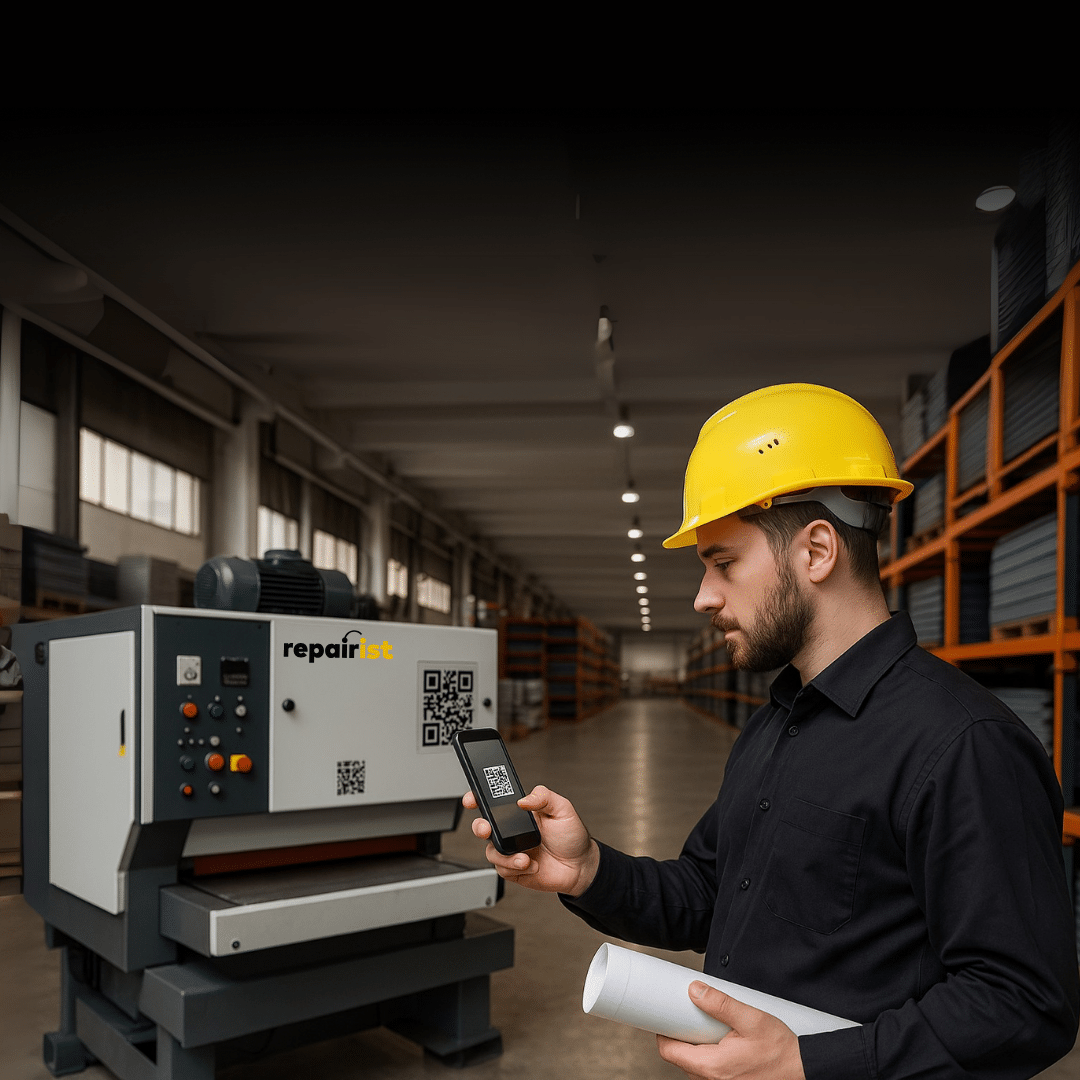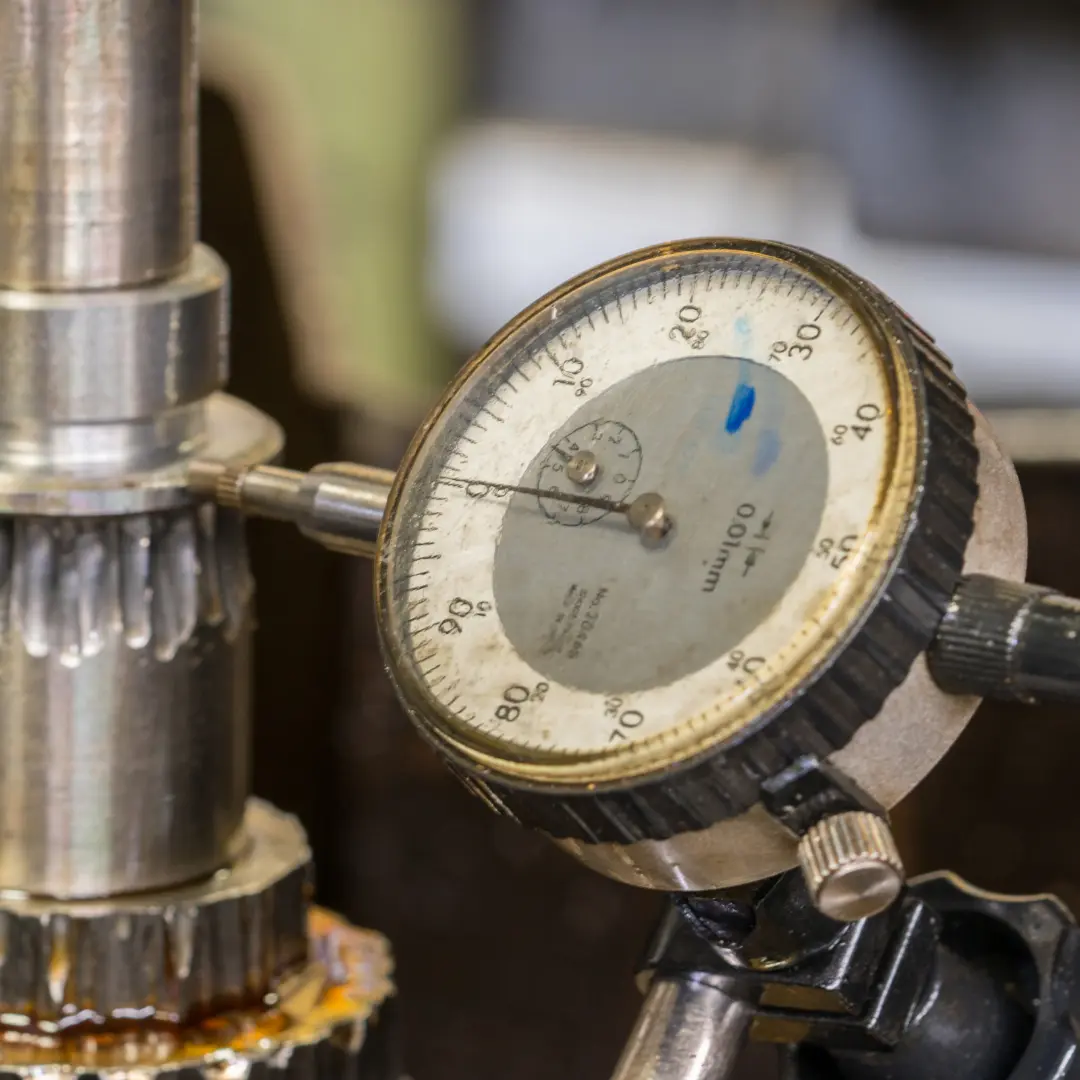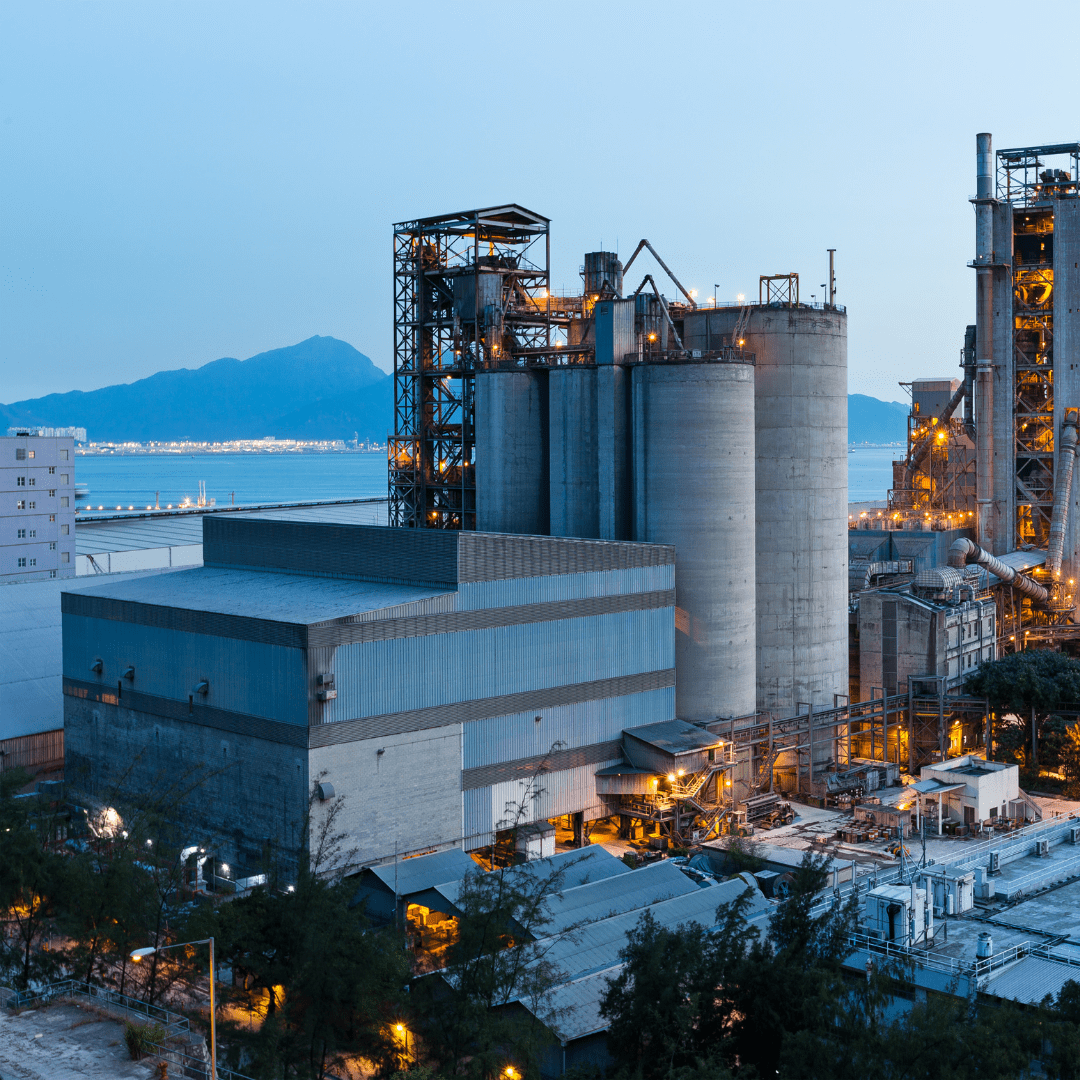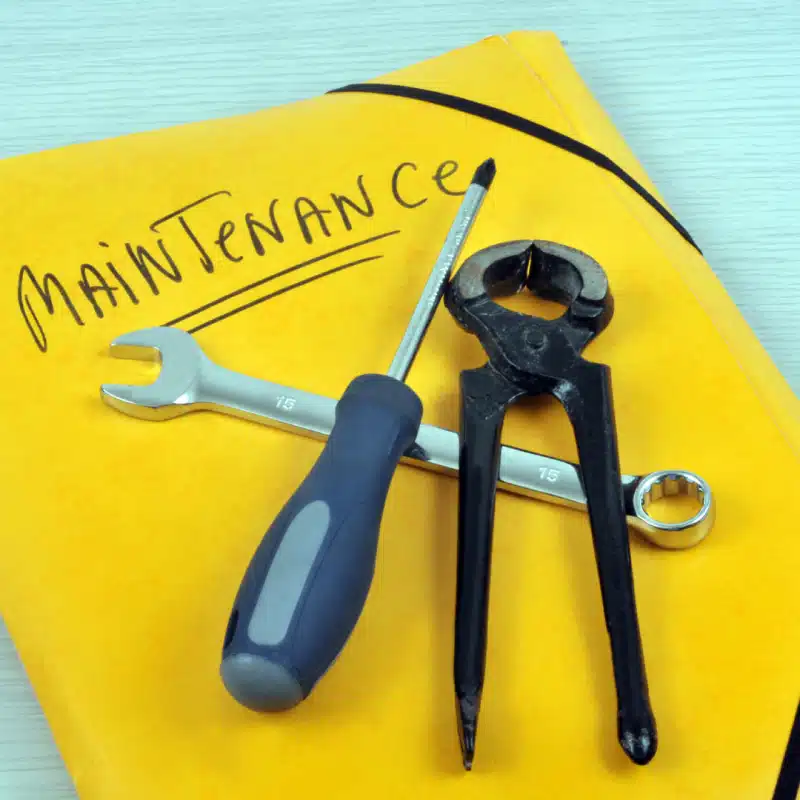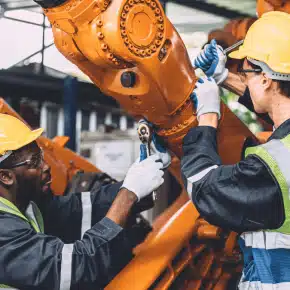10 Ways to Minimize Machine Breakdowns with CMMS
Machine breakdowns can cause significant disruptions and cost increases in production processes. However, with the right strategies and technologies, it is possible to prevent these failures. Computerized Maintenance Management Systems (CMMS) come into play here by optimizing maintenance processes and minimizing breakdowns. Here are 10 ways to minimize machine failures with CMMS:
1. Proactive Maintenance Planning
Proactive maintenance ensures that equipment undergoes regular maintenance before unexpected breakdowns occur. CMMS facilitates and optimizes this process:
- Creating Maintenance Schedules: CMMS creates customized maintenance schedules based on the type and usage frequency of the equipment. These schedules ensure timely periodic maintenance, guaranteeing the longevity of the equipment.
- Automatically Determining Maintenance Needs: CMMS analyzes the working data of the equipment to determine maintenance times. This helps detect potential performance drops in advance and prevents breakdowns.
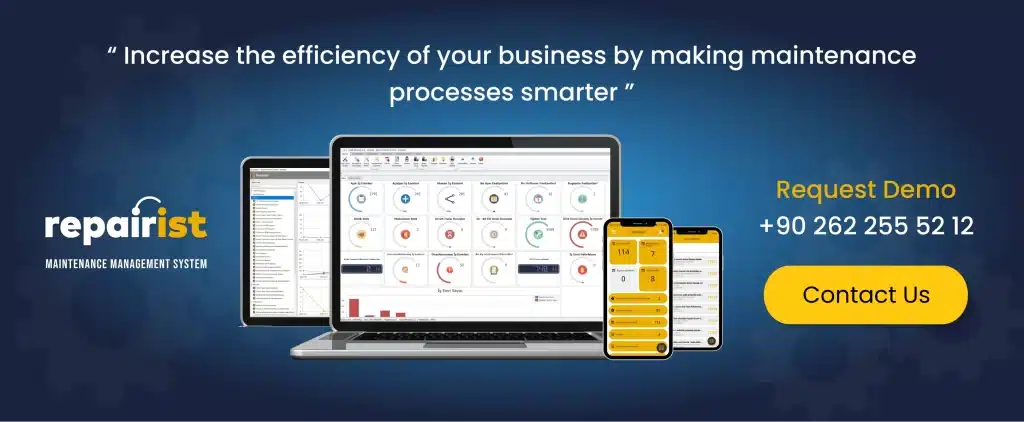
2. Predictive Maintenance Applications
Predictive maintenance analyzes the working data of the equipment to predict potential breakdowns in advance. Here’s how CMMS contributes to this process:
- Data Collection and Analysis: CMMS collects and analyzes the operating data of the equipment. This data provides detailed information about the performance of the equipment and helps predict potential breakdowns signs.
- Dynamically Adjusting Maintenance Plans: Based on the analysis results, CMMS dynamically adjusts maintenance plans. For instance, when a specific component of the equipment reaches a certain temperature, maintenance plans are automatically reorganized.
3. Asset Management
CMMS keeps a detailed inventory of all the equipment owned by the business and optimizes maintenance processes based on this inventory:
- Equipment Details and Maintenance History: CMMS stores detailed information (model number, serial number, purchase date, etc.) and maintenance history of each piece of equipment. This information plays a critical role in identifying the causes of breakdowns and creating regular maintenance plans.
- Monitoring Performance Data: CMMS continuously monitors the operational performance of the equipment. This helps detect abnormal changes in the equipment’s performance in advance and identify breakdowns risks.
4. Maintenance Request Management
CMMS manages breakdowns notifications and maintenance requests quickly and effectively:
- Automatic Notifications: Breakdowns or maintenance requests are automatically reported to the system. This ensures that equipment failures are immediately communicated to maintenance teams for quick intervention.
- Prioritization and Tracking: CMMS prioritizes and tracks incoming requests. Urgent situations and critical maintenance needs are addressed first, ensuring business continuity.
5. Equipment Performance Monitoring
CMMS continuously monitors the performance of the equipment and provides real-time data:
- Data Collection and Analysis: CMMS constantly collects and analyzes operating data (temperature, pressure, production quantity, etc.) of the equipment. This analysis is used to evaluate the health of the equipment.
- Trend Analysis and Alerts: CMMS detects performance trends and potential issues in the equipment. When abnormal conditions or performance drops are detected, automatic alerts and notifications inform the maintenance teams.
6. Automated Reminders and Notifications
CMMS provides automated reminders and notifications for maintenance activities, ensuring timely intervention:
- Ensuring Timely Periodic Maintenance: CMMS sends automatic reminders to ensure periodic maintenance is performed on time. This prevents maintenance neglect and ensures the equipment continuously operates at optimal performance.
- Spare Parts Inventory and Supply Management: CMMS monitors spare parts inventory and sends automatic notifications when needed. This ensures quick resolution of equipment breakdowns and prevents long downtimes.
7. Spare Parts Management
CMMS manages the inventory of spare parts and ensures that the required parts are always in stock:
- Monitoring Stock Levels: CMMS continuously monitors spare parts stock levels and sets minimum stock levels. This ensures quick parts supply even in emergencies.
- Optimizing Procurement: CMMS optimizes spare parts procurement processes. It establishes automatic communication with suppliers to keep stocks updated and prevent unexpected equipment downtimes.
8. Training and Certification Management
CMMS manages the training and certification processes of maintenance personnel:
- Identifying Training Needs: CMMS identifies the training needs of personnel and plans appropriate training programs. This continuously improves the technical skills and breakdowns diagnosis abilities of the staff.
- Tracking Certification Processes: CMMS tracks the certification processes of personnel and stores their documents. Necessary steps are taken on time to meet certification requirements.
9. Data Analytics and Reporting
CMMS provides detailed reports and analyses to identify breakdowns trends and maintenance needs:
- Detailed Performance Reports: CMMS reports the performance of the equipment in detail. These reports provide a broad perspective on the health of the equipment and guide future maintenance strategies.
- Identifying Failure Trends: CMMS analyzes failure and maintenance data to identify breakdowns trends. This helps detect the root causes of recurring failures and produce permanent solutions.
10. Mobile Access and Integration
CMMS integrates with mobile devices, enabling maintenance teams to work efficiently in the field:
- Field Access and Updates: Thanks to mobile integration, maintenance teams can access necessary information instantly in field conditions. Equipment information, maintenance instructions, and updates are easily accessible via mobile devices.
- Quick Response: In case of failures, maintenance teams can quickly exchange information and collaborate using mobile CMMS. This ensures faster resolution of breakdowns and maintains business continuity.
These detailed explanations illustrate how CMMS can assist businesses in minimizing machine breakdowns using its features and strategies. CMMS increases efficiency, reduces operating costs, and ensures operational continuity while managing maintenance processes.

Next Steps
Have you received sufficient information about “10 Ways to Minimise Machine Breakdowns“?
repairist is here to help you. We answer your questions about the Maintenance Management System and provide information about the main features and benefits of the software. We help you accessthe repairist demo and even get a free trial.
Aybit Technology Inc.
Frequently Asked Questions
CMMS integrates with mobile devices to facilitate fieldwork for maintenance teams. Through mobile applications, it is possible to easily access equipment information, maintenance instructions, and updates. This enables quick interventions and ensures business continuity.
The benefits of CMMS for businesses are as follows:
-It reduces costs by ensuring the longevity of equipment.
-It minimizes unexpected breakdowns and increases business continuity.
-It plans and organizes maintenance activities, optimizing workforce management.
-It supports decision-making processes with data analytics and reporting.
CMMS (Computerized Maintenance Management System) is a software system that helps businesses plan, manage, and optimize their maintenance activities. Also known as computerized maintenance management systems, CMMS automates processes such as equipment maintenance, breakdowns management, and spare parts management, thereby increasing operational efficiency for businesses.

